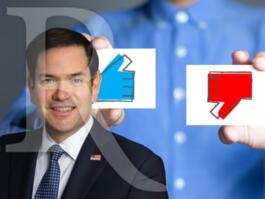Most Blame Politicians’ Unwillingness to Cut Spending for State Budget Crises
Many states are currently in a budget crisis, and most Americans think politicians, not taxpayers, are to blame.
Seventy-eight percent (78%) think politicians’ unwillingness to reduce government spending is to blame for the budget crises in many states. Just 13% think taxpayers’ unwillingness to pay more in taxes is to blame. This sentiment has held steady from July, when 75% felt politicians were more to blame.
In February, 83% blamed the federal budget deficit on politicians’ unwillingness to cut spending. In May of last year, 77% said politicians’ unwillingness to cut spending is the bigger problem in America today.
An overwhelming majority (73%) say politicians are more willing to raise taxes than to cut government spending. Nineteen percent (19%) say politicians are more willing to cut government spending. (To see survey question wording, click here.)
While majorities of both Republicans and Democrats say politicians are to blame for budget crises, Democrats are more likely than Republicans to put the blame on taxpayers.
Americans are opposed to individual states receiving federal bailout money, which is no surprise considering that 39% of voters still say the $787 billion stimulus plan hurt the economy, and 55% oppose a second stimulus plan.
Roughly half (48%) of Americans oppose the federal government providing bailout money for states with serious financial problems. Twenty-eight percent (28%) think the government should provide bailout to struggling states, but nearly as many (24%) are not sure.
Sixty-four percent (64%) of Republicans do not think the government should provide bailout funding for financially strapped states, while 47% of Democrats do think the fed should provide bailout money. Americans not affiliated with either major political party favor bailout funding for states by a 47% to 27% margin.
(Want a free daily e-mail update? If it's in the news, it's in our polls). Rasmussen Reports updates are also available on Twitter or Facebook.
The survey of 1,000 Adults was conducted on October 19-20, 2010 by Rasmussen Reports. The margin of sampling error is +/- 3 percentage points with a 95% level of confidence. Field work for all Rasmussen Reports surveys is conducted by Pulse Opinion Research, LLC. See methodology.
Rasmussen Reports is a media company specializing in the collection, publication and distribution of public opinion information.
We conduct public opinion polls on a variety of topics to inform our audience on events in the news and other topics of interest. To ensure editorial control and independence, we pay for the polls ourselves and generate revenue through the sale of subscriptions, sponsorships, and advertising. Nightly polling on politics, business and lifestyle topics provides the content to update the Rasmussen Reports web site many times each day. If it's in the news, it's in our polls. Additionally, the data drives a daily update newsletter and various media outlets across the country.
Some information, including the Rasmussen Reports daily Presidential Tracking Poll and commentaries are available for free to the general public. Subscriptions are available for $4.95 a month or 34.95 a year that provide subscribers with exclusive access to more than 20 stories per week on upcoming elections, consumer confidence, and issues that affect us all. For those who are really into the numbers, Platinum Members can review demographic crosstabs and a full history of our data.
To learn more about our methodology, click here.



